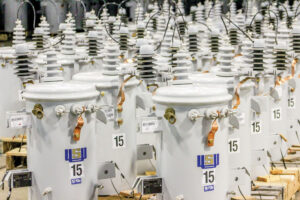After every major outage storm like Hurricane Sandy there is always what seems like a logical question, “why not bury all the lines?” What most utility customers, commentators and political leaders may not understand is just how much more expensive underground line construction can be.
This past summer the U.S. Energy Information Administration (EIA) released a primer on the cost of burying power lines across the country. One surprise is just how much that cost can vary depending on the region, but in general the cost is five to ten times more per mile than building overhead lines. Rural regions are less expensive, but still the cost can average nearly $500,000 per mile according to the EIA. That cost is eventually born by ratepayers, or in the case of cooperatives the member-owners.
Only 18 percent of the country’s grid is underground mainly because of the high price tag. High-voltage transmission lines are rarely installed underground because the cost can be as much as $23 million per mile.
On the positive side, underground lines are less susceptible to outages caused by wind, ice, hurricanes and trees, but they are not immune to outages. When outages happen on underground lines they are more difficult and time consuming to find and repair.







